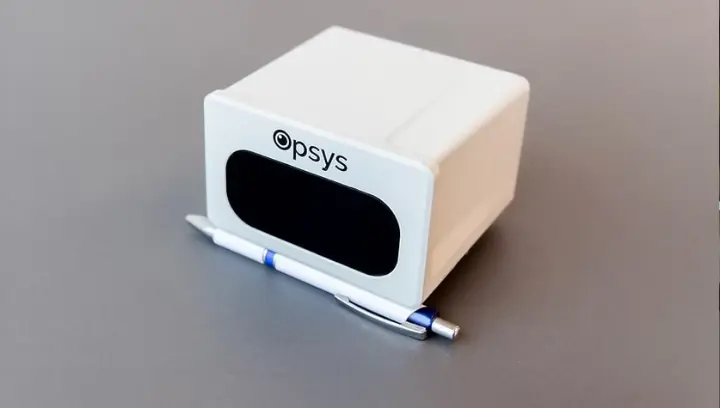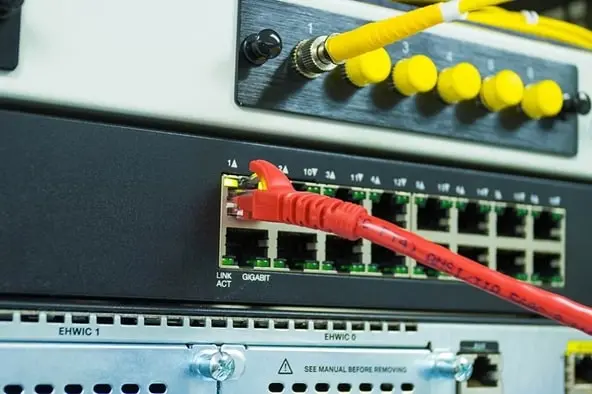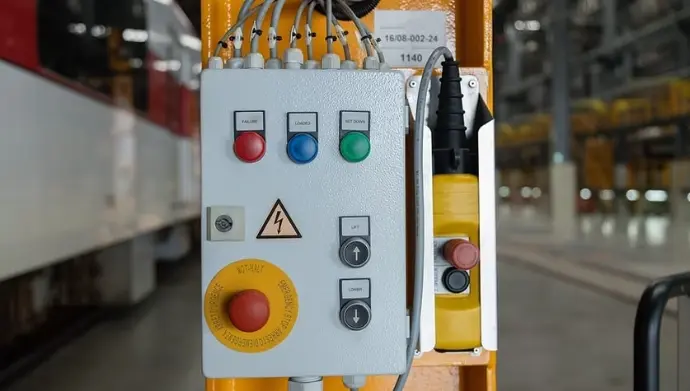Making a device Power over Ethernet (PoE) capable offers several benefits, particularly in environments where simplicity, cost efficiency, and flexibility are key. The main advantages are:
Simplified Installation
- Single Cable for Power and Data: PoE eliminates the need for separate power and data cables, reducing installation complexity and costs.
- Reduced Electrical Work: No need for dedicated power outlets at device locations, which can lower installation costs and time.
Cost Savings
- Lower Infrastructure Costs: Avoids the expense of installing electrical outlets or running separate power circuits.
- Energy Efficiency: Centralized power delivery through PoE switches can be more efficient than distributed power sources.
Flexibility in Placement
- Unrestricted by Power Outlets: Devices can be installed in locations without access to traditional power sources, such as ceilings, outdoor areas, or remote corners.
- Scalability: Adding devices is easier, as only a network cable is needed.
Centralized Power Management
- Remote Control: PoE allows devices to be turned on or off remotely through network management tools.
- Backup Power Integration: With a UPS connected to the PoE switch, connected devices can remain powered during outages.
Enhanced Reliability
- Centralized Power Source: Centralized power reduces the likelihood of device power failures, as fewer individual power adapters are involved.
- Standards Compliance: PoE standards (e.g., IEEE 802.3af/at/bt) ensure consistent and safe power delivery.
Safety
- Low Voltage: PoE operates at safe voltage levels, minimizing electrical hazards.
- Automatic Detection: PoE switches detect whether connected devices are PoE-capable, preventing accidental power delivery to non-PoE devices.
Aesthetic and Space Benefits
- Clean and Organized Setup: Fewer cables mean a more streamlined and professional appearance.
- Reduced Clutter: Ideal for areas where space is limited or a clean look is essential.

Using PoE LiDAR devices for Smart Cities and ITS, amplifies the general benefits of PoE while addressing specific challenges in these domains. Essentially PoE simplifies integration of LiDAR for real-time traffic flow analysis, pedestrian monitoring, or environmental scanning without relying on traditional electrical infrastructure.
The top ten advantages of using PoE LiDAR for Smart Cities and ITS are:

1. Simplified Deployment in Hard-to-Reach Locations
- Remote and Outdoor Installations: LiDAR devices for traffic monitoring, robotics, or security systems are often mounted on poles, walls, or vehicles where traditional power outlets may not be accessible.
- Reduced Trenching and Wiring Costs: For Smart Cities and ITS, installing devices along roadways or open spaces without laying extensive power infrastructure saves costs and minimizes disruption.
2. Enhanced Mobility and ScalabilityEase of Relocation:
Industrial robotics and mobile systems benefit from PoE because devices can be quickly moved and reconnected with a single cable.Rapid Expansion: Smart City deployments can scale quickly by adding PoE-enabled devices to an existing network infrastructure.


3. Increased Resilience and Uptime
- Centralized Backup Power: A PoE-enabled LiDAR system can leverage centralized power backup systems (like UPS or solar-powered switches), ensuring continued operation during power outages, crucial for traffic systems, security monitoring, and robotics.
- Fail-Safe Operation: Industrial applications often demand 24/7 reliability, and PoE provides stable power delivery with fewer points of failure compared to decentralized power adapters.
4. Simplified Maintenance and Troubleshooting
- Remote Diagnostics and Management: Many PoE switches support remote monitoring and control. This allows technicians to check the power status, reboot devices, or update firmware without needing physical access to the device.
- Reduced Downtime: Security cameras, traffic monitors, or LiDAR units can be quickly reset via the network without manual intervention.


5. Enhanced Safety in Industrial Environments
- Low Voltage: PoE minimizes the risk of electrical hazards in industrial setups, where sensitive equipment is often deployed.
- Robust Cable Design: Ethernet cables are durable and can withstand environmental stress better than some power cords, ensuring longevity in harsh conditions like robotics factories or outdoor deployments.
6. Supports Modern IoT Integration
- Data Fusion: Many industrial applications integrate LiDAR with other sensors (cameras, weather monitors, traffic counters). PoE simplifies the connection of multiple devices to the same network.
- Edge Computing Ready: LiDAR units equipped with onboard processing can use PoE to stay connected to centralized edge devices, enabling real-time analytics crucial for ITS and robotics.
7. Space-Saving and Aesthetic Benefits
- Compact Design: LiDAR devices in industrial settings often have limited internal space. Using PoE eliminates the need for additional power circuitry, reducing the overall size of the device.
- Seamless Integration: In Smart City or architectural projects, having fewer cables and cleaner designs aligns with aesthetic goals.
8. Reduced Total Cost of Ownership
- Fewer Components: Eliminating external power supplies lowers initial costs and reduces the need for replacements in the long term.
- Single Vendor Ecosystem: A PoE infrastructure often uses a unified switch system, simplifying vendor management and support.
9. Enhanced Security for Critical Applications
- Tamper-Resistance: Centralized power and data delivery reduce the need for external power boxes, which could be tampered with in public installations.
- Cybersecurity Integration: PoE switches can support VLANs, firewalls, and other network-level security measures to protect data integrity from connected LiDAR and IoT devices.

10. Sustainable and Green Energy Applications
- Efficient Energy Use: PoE delivers power only as needed, reducing energy waste compared to always-on AC power systems.
- Solar Integration: PoE-powered LiDAR can easily be paired with solar-powered PoE switches for off-grid deployments in Smart Cities and ITS.
By combining the features of PoE with the unique needs of industrial applications, it becomes an ideal choice for powering LiDAR and other advanced small-box devices in cutting-edge deployments.
Main source: 10 Reasons to Use PoE LiDAR for ITS & Smart Cities Challenges